Author: Brian Hall
Flaked maize, the fancy term for corn that has had its germ and oil removed, is often looked down on as a brewing ingredient due to its regular use by larger breweries making light beers for heavy consumption by the general population. Historically, flaked maize was used as an adjunct to aid with stability and clarity by early 19th century European brewers who had immigrated to the United States where 6-row barley was being heavily used; they found that by using a mix of corn and 6-row barley malt in the mash, they could make a beer that was easy drinking and more visually appealing, more closely resembling the all 2-row beers they were making at home.
The fact corn is both cheaper and provides a subtler flavor than barley malt makes it a huge hit for breweries who market the less filling and smoother flavor of their product. On the other end of the spectrum are brewers and drinkers of craft beer, many of whom scrutinize the use of such high proportions of corn specifically for the reasons it’s used by larger corporate breweries. But does it have a place?
I’ve used small amounts of flaked maize in the past when it’s appropriate and always thought it yielded a slightly smoother, sweeter characteristic, which was undoubtedly influenced by expectations. Lately, I’ve been on a “beer flavored beer” kick and wanted some easy drinking pale quaffers on tap, so I busted out some flaked maize and put this one to the test!
| PURPOSE |
To evaluate the differences between a beer made with a portion of flaked maize and one that was made with no flaked maize.
| METHODS |
I went with a very simple American Lager recipe for this xBmt in hopes it would display any impact of the variable well.
Do I Make You Corny, Baby?
Recipe Details
| Batch Size | Boil Time | IBU | SRM | Est. OG | Est. FG | ABV |
|---|---|---|---|---|---|---|
| 5.5 gal | 60 min | 34.3 IBUs | 3.5 SRM | 1.049 | 1.013 | 4.7 % |
| Actuals | 1.049 | 1.01 | 5.1 % | |||
Fermentables
| Name | Amount | % |
|---|---|---|
| Pale Malt (2 Row) US | 4 lbs | 36.36 |
| Pilsner (2 Row) Bel | 4 lbs | 36.36 |
| Corn, Flaked | 3 lbs | 27.27 |
Hops
| Name | Amount | Time | Use | Form | Alpha % |
|---|---|---|---|---|---|
| Saaz | 50 g | 30 min | Boil | Pellet | 3.3 |
| Saaz | 57 g | 20 min | Boil | Pellet | 3.3 |
| Saaz | 57 g | 5 min | Boil | Pellet | 3.3 |
Yeast
| Name | Lab | Attenuation | Temperature |
|---|---|---|---|
| Urkel (L28) | Imperial Yeast | 73% | 52°F - 58°F |
Notes
| Non-Flaked Maize Batch had 5.5 lbs each of Pale and Pils malts. Water Profile: Ca 75 | Mg 1 | Na 10 | SO4 84 | Cl 70 |
Download
| Download this recipe's BeerXML file |
I collected all of the RO water for both batches a couple hours ahead of time and adjusted it to my target profile before tossing in my heat stick.

As the liquor was heating, I weighed out and milled the grain for each batch.
The batch without flaked maize received an equivalent amount of additional base malt. Since the corn was flaked, it didn’t require milling, so I tossed it in to its respective container once the grain was milled.
Once each batch of water was appropriately heated, I mashed in and checked to ensure both were at the same mash temperature.
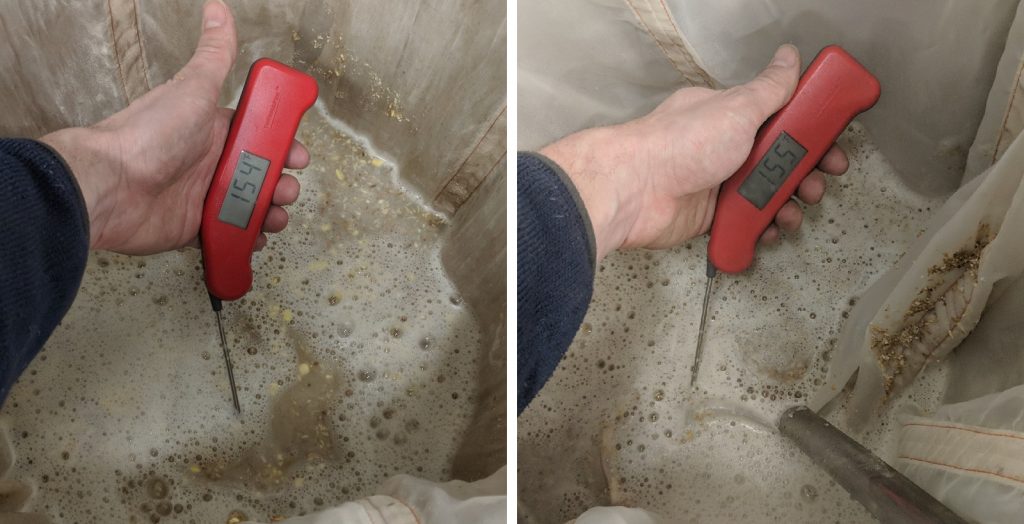
The mashes were left to rest for 60 minutes each.
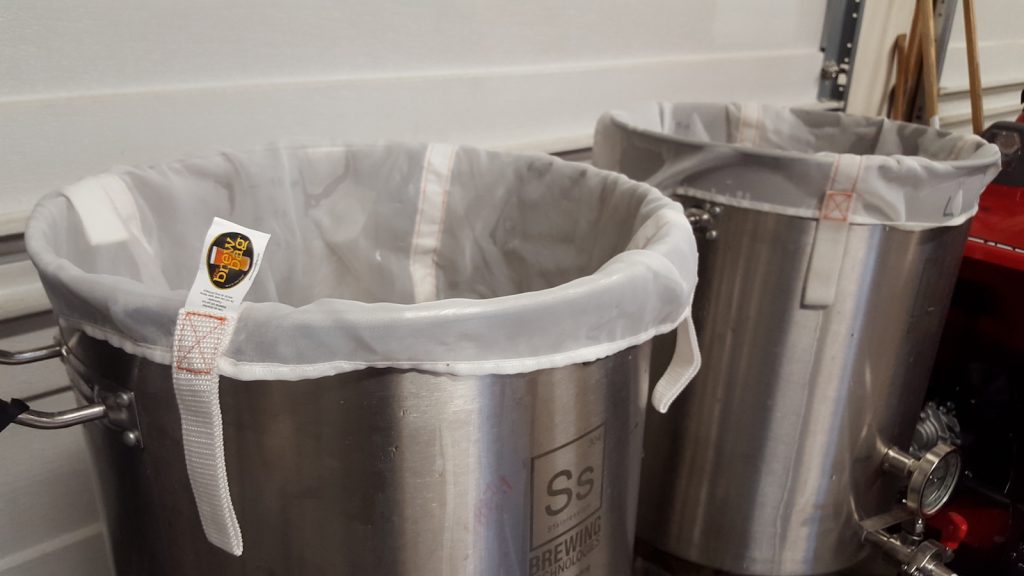
I measured out equal amounts of the same hops for each batch while waiting for the mash to finish.
When the hour was up, I removed the grain bags and let them drip until my pre-boil volume was reached, after which I hit the flame under each kettle. The worts were boiled for 60 minutes with hops added as stated in the recipe.
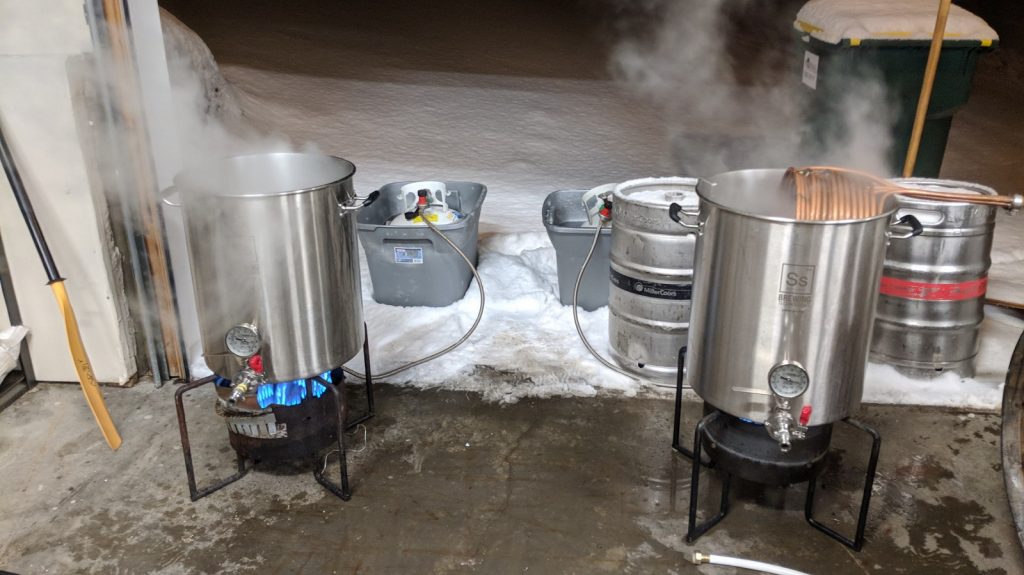
At the completion of the boil, I quickly chilled each wort with my immersion chiller.
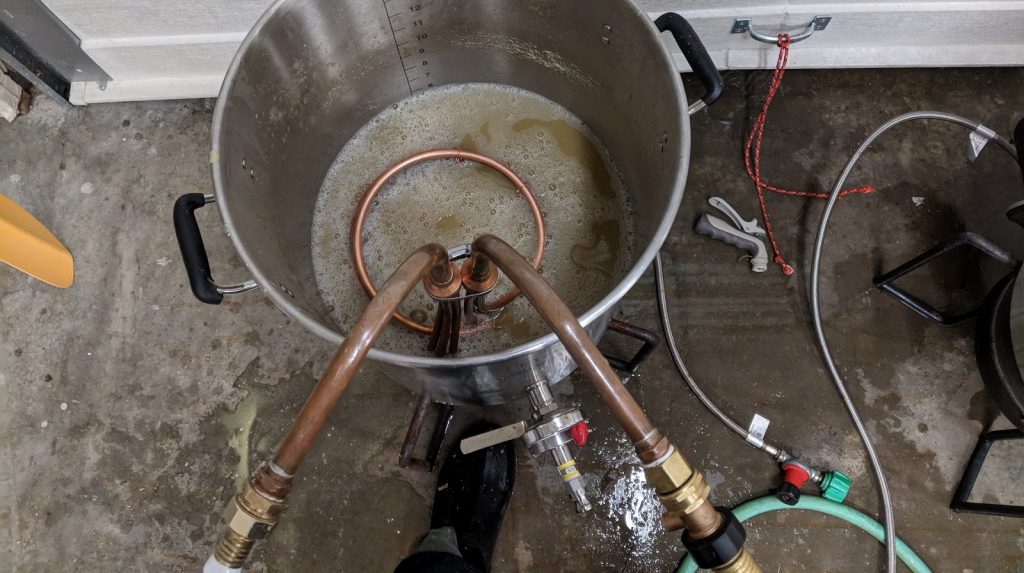
Refractometer readings showed a fairly big difference between the worts, with the flaked maize clocking in 0.007 SG points lower than the batch without flaked maize.
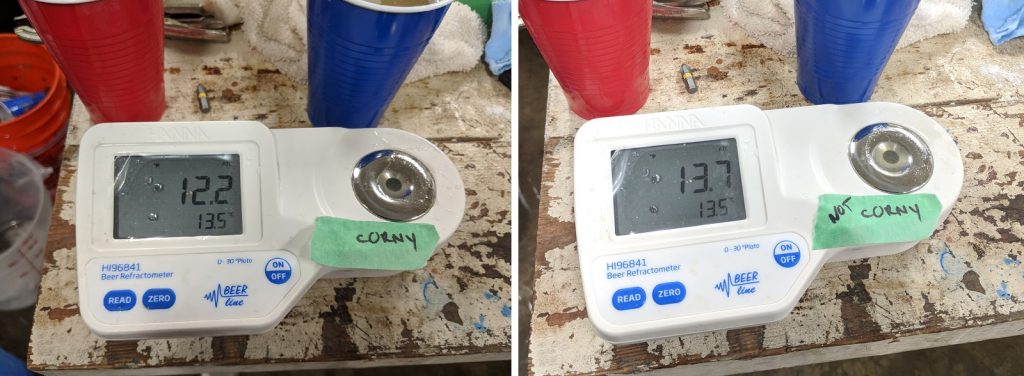
After racking equal amounts of wort to separate glass carboys and placing them in my fermentation chamber, I let them sit until my desired fermentation temperature of 54°F/12°C was reached, at which point I pitched volumetrically equal vitality starters of Imperial Yeast L28 Urkel into either one.
Fermentation kicked off in both batches with 12 hours and proceeded similarly. After 4 weeks in primary, I took hydrometer measurements showing both beers reached a similar FG.
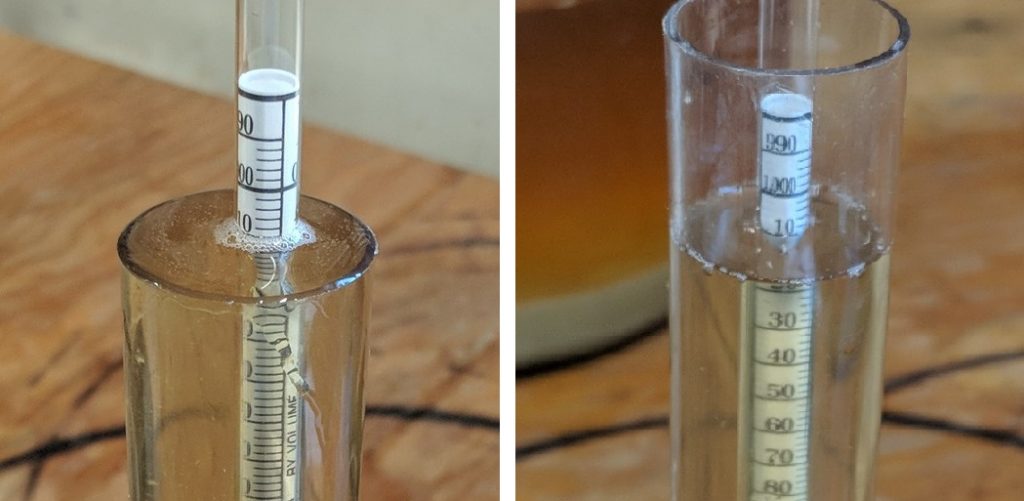
The beers were then transferred to kegs.
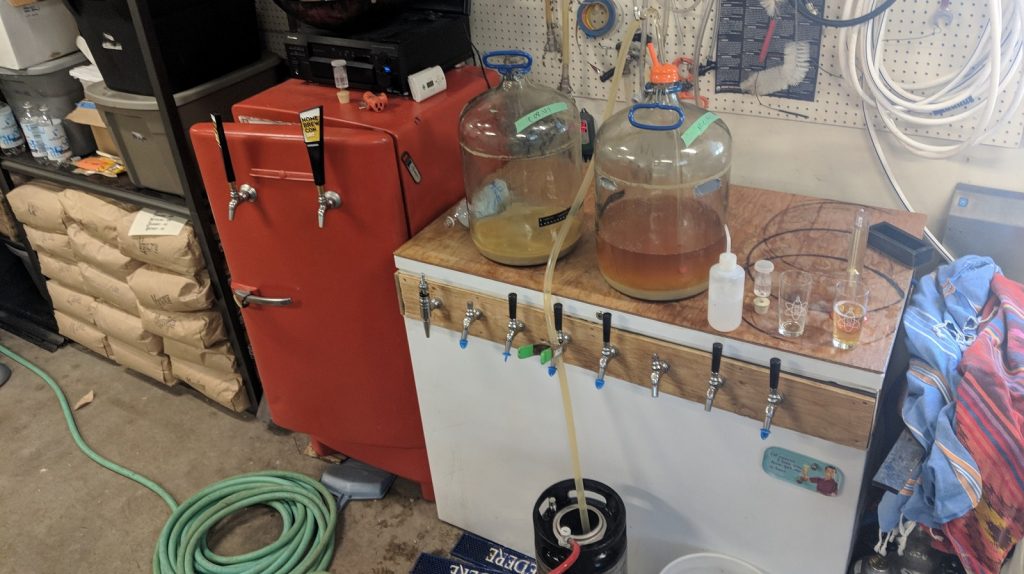
The filled kegs were set in my kegerator and burst carbonated overnight before I reduced the gas to serving pressure. Skipping my usual gelatin fining process, I let the beers cold condition for a couple weeks before moving forward with data collection.

| RESULTS |
A total of 23 people of varying levels of experience participated in this xBmt. Each participant was served 1 sample of the beer made with flaked maize and 2 samples of the beer made without flaked maize in different colored opaque cups then asked to identify the unique sample. At this sample size, 12 tasters (p<0.05) would have had to identify the unique sample in order to reach statistical significance, which is exactly how many were able to do so (p=0.048), indicating participants in this xBmt could reliably distinguish a Pilsner made with 27% flaked maize from one made with all barley malt.
The 12 participants who made the accurate selection on the triangle test were instructed to complete a brief preference survey comparing only the beers that were different. Preference for either sample was split with 4 tasters preferring each. Another 3 tasters reported having no preference despite perceiving a difference, while 1 taster felt there was no difference between the beers.
My Impressions: Upon first tasting, I thought the beer sans corn was ever so slightly crisper than the version made with flaked maize, which I perceived as having a slightly smoother finish. Out of 9 semi-blind triangle test attempts, I successfully identified the odd beer out a whopping 1 time. The beers tasted identical to me. As far as the beers go, I enjoyed both of them and had no problem drinking both kegs, though I might reduce the bitterness a bit in future iterations.
| DISCUSSION |
While the emotional arguments against the use of corn in beer, and those who choose to use it in large proportions in their brewing, is ultimately up to each individual consumer, contentions that its use impacts certain characteristics of beer can be more objectively tested. The fact blind tasters in this xBmt were capable of telling apart a beer made with 27% flaked maize from a similar beer that didn’t include the adjunct seems to provide some support for the aforementioned contention.
Given the hate some seem to throw at flaked maize, I found it interesting that the preferences of those who were correct on the triangle test was split evenly between the samples. Makes me wonder how things might have looked if they’d known which beer was made with flaked maize.
One objectively measurable difference between the beers was the ABV given the lower OG of the flaked maize beer. It’s possible those who perceived a difference between the beers did so as a function of the flaked maize beer having nearly 1% ABV less than the beer made with all barley malt. In fact, I’m surprised this alone didn’t result in the beers being more identifiable different– I was completely aware of everything and even I couldn’t tell these beer apart in the slightest.
Considering I’ve made many great beers without the use of flaked maize, which homebrew shops typically sell for about the same price as malted barley, I have no intention to use it more often in my brewing. There may be some application where it’s an ideal solution, and I’ll definitely include it in the occasional Cream Ale for stylistic appropriateness. But in the end, the big boys can keep their corn and I’ll continue using good ol’ barley malt to make my beer flavored beer.
If you have any thoughts about this xBmt, please do not hesitate to share in the comments section below!
Support Brülosophy In Style!
All designs are available in various colors and sizes on Amazon!
Follow Brülosophy on:
FACEBOOK | TWITTER | INSTAGRAM
If you enjoy this stuff and feel compelled to support Brulosophy.com, please check out the Support page for details on how you can very easily do so. Thanks!

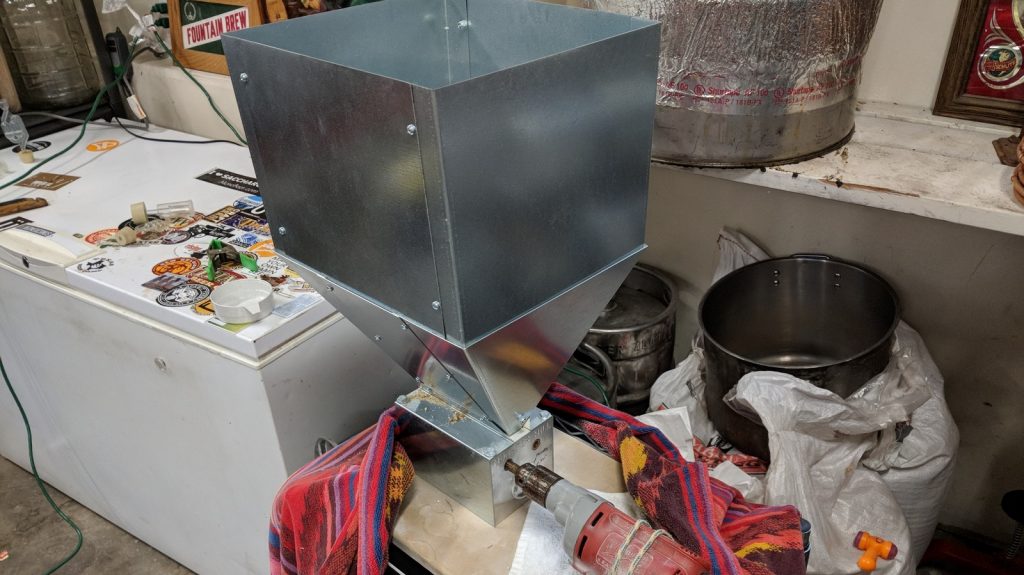
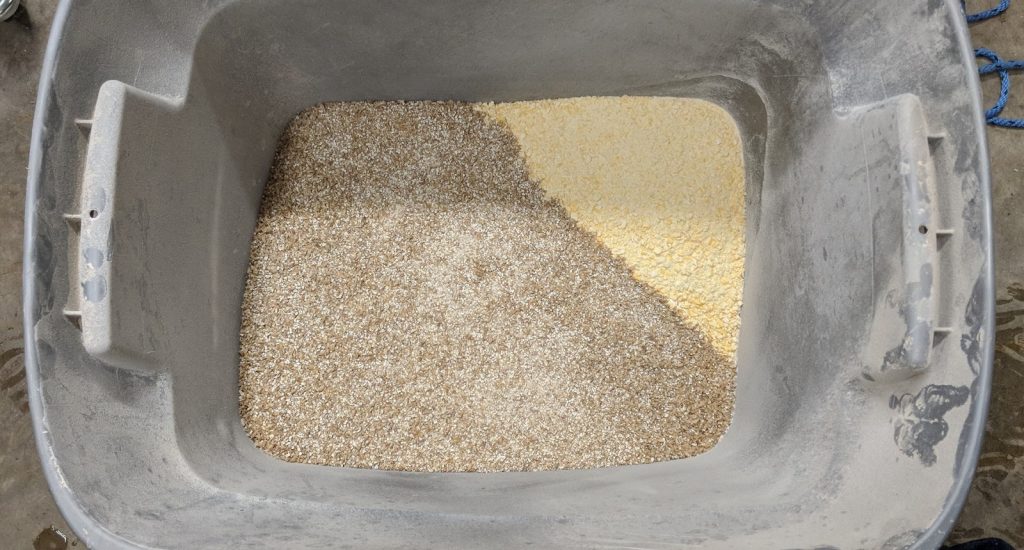
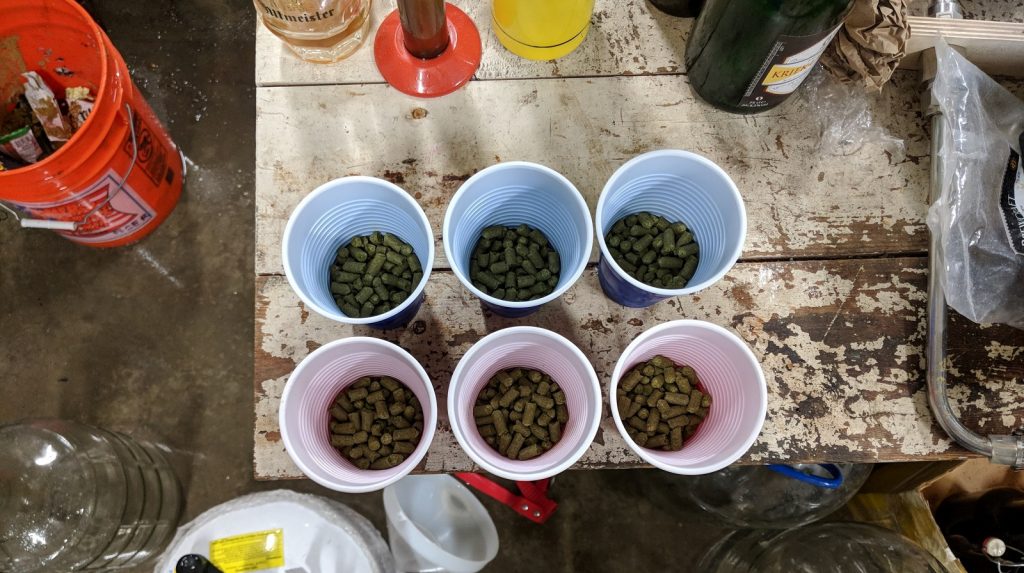
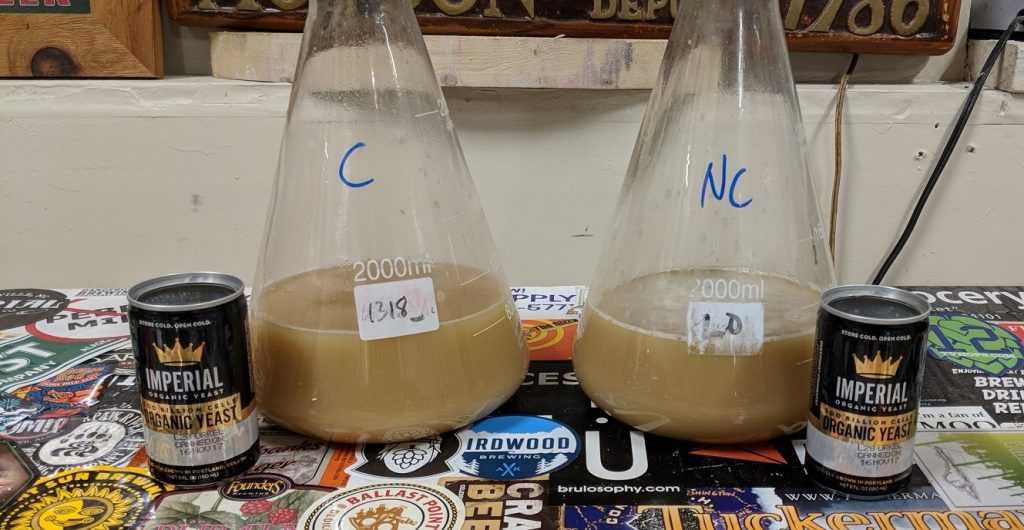











43 thoughts on “exBEERiment | Impact Flaked Maize Has On An American Lager”
Thx for the experiment. Enjoyed it as a person that makes Cream Ale with Maize. Off the subject question for you. What size freezer did you purchase for you keezer? Looking for one tp do a build on this summer. Thx again!
It was given to me, I want to say it’s 14 cubic feet…?
Part of me thinks this would have provided more noticeable results had you dropped the IBUs down to 20 or so. But … I may just be a little defensive of my own habit of using an 80 / 20 mix of malt and corn for my drinkin’ beers.
I’d also be curious to see the results of a similar experiment that tests corn vs. rice.
I would also be interested in a corn vs rice xbrmt. I’ve heard anecdotally that corn provides a bit more sweetnessand flavor in the finished beer than rice. It would interesting to see if people could actually tell the difference. I think the percentage would need to be fairly high though maybe 20-30%.
The results were significant! Maybe more people could have gotten it with lower IBUs, but I also was looking for a certain flavor in the beer 🙂
Hard to say if the results were significant since you needed 12 and got 12 but in the preference survey “1 (of the 12) taster(s) felt there was no difference between the beers” which makes it likely he just guess correctly the first time and did not perceive a difference either time.
Why don’t you include your own guesses in the total?
Wow, huge surprise to me as I occasionally use maize (as polenta/grits) in lagers and get a very noticeable sweetness when using >5% maize, which can be delicious in the right beer. This is a deliberate style choice on my part, inspired by Italian lagers such as Peroni. I love it, but maybe it was my imagination all along? Or maybe polenta/grits have more of a corn flavour and flaked maize is neutral?
The maize version also looks more clear to me, though that could just be the photo of condensation.
I think the reaction against maize is probaby a consequence of the reaction against industrial BMC beers, which is understandable, but I think it’s a valid adjunct. Same goes for rice/sugar/wheat – they all have their uses.
Perhaps it would be significant with a lower percentage of maize, no way to tell without trying!
It was more clear to me as well.
True!
how long ago did you make this? or, do you live in antarctica?
nice view from your patio too. wow!
I brewed it last day of February, and took the final shot a bit more recently. In Anchorage, AK
oh cool. my niece lived there. if i ever get up to alaska i’ll see if you are around.
I forgot to say that I never seem to get great extraction from flaked grains like oats, wheat, etc. I always assume they contribute around 20-25 ppg instead of the advertised amount. Maybe it just takes a lot longer to break down the starches due to the reduced diastatic power vs an all-malt grist.
It might be a diffusion issue. I think the major US brewers cook grits (or rice) to solubilize the starch and then do a cereal mash before adding to the main mash–it’s a fairly involved process.
Interesting that people flip a bit when the topic of using flaked corn or rice in a home or craft brew comes up. About every 10th beer I make uses either rice or corn (rice being preferred). The two best non-German (if that makes sense) lagers I make come from Clone Brews – Asahi Dry Draft and Efes Pilsen. Both use 6-row and cooked rice.
Great article.
BTW, I was supposed to do cold weather training in Adak back in the mid-1980’s. Mission changed. Would love to have visited the state.
I don’t use a lot of corn, but don’t see any reason not to, it was great to have some clarity without the loss of any flavor.
If you ever make it up here, shoot me a line! Never been to Adak, but would love to sometime.
Thanks for the Exbeeriment Brian!
Very interesting to see the clarity difference and also that the corn was not obvious in this one.
I wonder would the conversion efficiency been better if you had run a protein rest (at approx 55C or 131F. to boost the diastatic power of the mash, I always do this when using reasonably large amounts of unmalted adjuncts like burgul wheat, instant polenta etc, and hit great numbers.
(I can do so without fear of scorching the starches as running a ghetto style HERMS and from past experience would advise caution when adding heat directly using electric elements to starchy worts to step)
Possibly, but for this xbmt, I kept everything as I usually brew: simple. 🙂
Flaked corn is fairly weak. You need to try white corn meal. It tastes better, and has higher extract than yellow corn. It does require cereal mashing. I cook it in a kettle with hot water at 95C for an hour. I mix in some high temp amylase enzyme to reduce the viscosity and help liquifaction. It is very inexpensive in the tiny quantity needed. Once cooked, you mash as normal. I use BIAB so I can mash anything including high quantity wheat, rye or corn without worrying about stuck sparge.
Give it a try. It’s a much better flavor.
Next time I try corn I’ll check it out!
I’ve been requesting this one for years.
I’ve never used maize because I *hate* that corn taste/smell. I can smell DMS a mile away, and never wanted to add any of those flavors purposely. I guess this experiment backs that up?
It’s not the same flavor as DMS, it’s a pleasant sweetness. To my palate it’s distinctive and I use it fairly sparingly like a flavor malt. Quite different from rice, which I don’t think adds any sweetness but also helps make a paler, clearer lager, if that’s what you’re aiming for rather than full-bodied German maltiness.
Huh… You know, now I’m thinking I may have to try using it in my upcoming Berliner Weiss. A very pale soft sweetness would certainly play well in there!
Thanks for the reply!
I don’t think flaked maize and DMS have the same flavor/aroma.
Did you grind up the flaked maize as well, or leave it whole?
I left it as is, since it was already flaked.
I think that the assumption that corn was always cheaper than malted barley is something that can be disputed on different grounds. I refer mostly to references from Ronald Pattinson here.
One thing is that in historic British recipes, as published by him, flaked maize is indeed used. However, both world wars made it difficult to import corn, which means that there wasn’t really British corn agriculture. This probably made it more expensive. The second one is that it is sometimes used as grits, which means that there was a separate cereal mash step using a grit cooker: more work, more energy, more cost.
Another adjunct that seems to not have been used because of lower costs, was sugar and all kinds of derivatives. There is post by Ronald Pattinson which shows the prices of different adjuncts and malts, and the conclusion is that sugars were more expensive.
I suppose that corn has always been cheaper for US based brewers, but that it became cheaper globally after WWII.
Thanks for the info!
Off Topic Test Idea: Ferulic acid rest. Does it really give more clove character in a weizen? I haven’t seen this tested.
Thanks for this experiment! I have wondered if the effect of flaked corn would be perceivable. Previous exBeeriments have shown non-significant results of variables supposed to have a big impact on taste. Corn, on the other hand, is supposed to have a subtle flavour contribution. I have thus wondered whether I would be able to perceive it. I still wonder, though.
To the extent corn add a taste, it does not add the taste of barley, as adding more barley does. Tasters may thus tell the effect of extra barley rather than the lack of corn. The 1 ABV difference can be a source of the significant result, but the Centennial pale ale experiment on mash temperature, suggest otherwise. As you seem to have low efficiency in converting the flaked corn, the difference in ABV is about what you would expect when removing the flaked corn, without adding more barley. (BeerSmith predict a larger difference in ABV, but then it also predict no difference in OG in your recipee.)
Thus I still wonder: if you remove the flaked corn without adding more malt, would the difference be perceivable?
Would be interesting to try!
Thanks for the test. I’ve found that to capture the flaked corn fermentable sugars it’s necessary to steep the flaked corn at 165 degree to start the mash process. I stumbled on to this process change at a home distilling site after struggling with the low extract situation.
Thanks for the exbeeriment, I am curious about some things.
Your efficiency at 11 lbs of grain is ~63-65% correct? At least that is what Brewers Friend is telling me based upon your grain bill.
And if I understand, the Flaked maize gave you a hit of -0.007 points, so your efficiency is ~55% on the maize beer?
I am asking because I have never seen such a hit when brewing with flaked maize. IN fact today I brewed a Kentucky Common,
Batch size was 22 L (5.7 gallon)
the grain bill was
6 lb Plzeňský slad (Záhlinice) (Czech Pilsner Malt)
2lb 10 oz Flaked Maize
4 oz Simpsons Brown
4 oz Simpsons Red Rye
I was expecting ~74% efficiency based upon my last batch for 1.045 OG
and was shocked that I hit 80% @ 1.049
9.15 LB grain, best efficiency I have hit in long time.
So I am wondering at the hit on your efficiency, based upon my results today. To me the corn gave me a bump of 6%
Oh, 1 more thing, I BIAB, and mashed in at 148, but due to other work, my mash was 90 mins, not 40-60. Also the mash thickness was 24 qt/9.15 lbs so 2.5 qt/lbs, I mashed out @172F 5 liters, starting boil volume was ~24.
I collected 5.5 gallons of wort into the fermenter, so that put me at ~73% efficiency for no corn, and down to upper 60’s for corn. I don’t know why I had the hit I did, the only thing that comes to mind was less enzymes in the mash, so perhaps less conversion? Next time I’ll check gravity after mashing – however I don’t brew with corn so much. Thanks for the response, I appreciate the thoughts.
Hi Brian thanks for clarifying. So am I missing something? If you have og of 1.049 and 11lbs grain and I have og of 1.049 and 9lbs grain me thinks something is screwy. Maybe my hydrometer is wrong. When I checked done brew programs they all gave your 11 lbs grain with 73% efficiency an OG of around 1.057-9 so this is my confusion. Is my equipment wrong or maybe yours?
Sorry…I missed something ;). At the top stats section you put actuals at 1.049…. I mistook this for your all barley beer. I see your barley beer is 1.056 which makes 100% sense. My mistake I now understand. Sorry for not reading properly
I made a cream ale recently that was 60% 6 row/ 40% popped popcorn. I didn’t have another beer to compare it to, but I perceived a noticeable corn sweetness. I’m curious if there is something unique to flaked corn (age, less surface area, etc.)that dulls the flavor and might explain the ding on efficiency. I’ve used dry popped popcorn a couple times for brews and it seems to work well. It takes a lot of space in the mash until you add liquid then it shrinks down.
My experience with corn in brewing in larger scale at my microbrewery (550l) is that it gives a crispier finish and more “common” beer. But it needs longer conditioning time than non corn beers.
So in a recent kit I bought it came with flaked maize in the bag and as usual I remilled everything for BIAB and I got a very strong corn flavor in the aroma in the finished beer. Is this because I milled it or a downfall of using corn?
I routinely add corn to pale ales. I’ve never noticed a drop in efficiency from replacing barley with corn. Wondering what the issue was here? I also add rice to beers that I want to keep as light in color as possible. No drop in OGs there either. Any idea where your drop in efficiency might have came from?
This is interesting as I also always typically hit my OG except when using flaked adjuncts. Thought it was something I did wrong the first time it happened but last night I brewed a prepro lager with 2lbs flaked corn and 5 lbs of 6 row. Again, missed the mark by a sizable amount. I’m sure the beer will turn out just fine but disappointing the so far off.